
Rediscovering Japan

Rediscovering Japan
Travel (Meiji Shrine (Tokyo))

by tomizuta
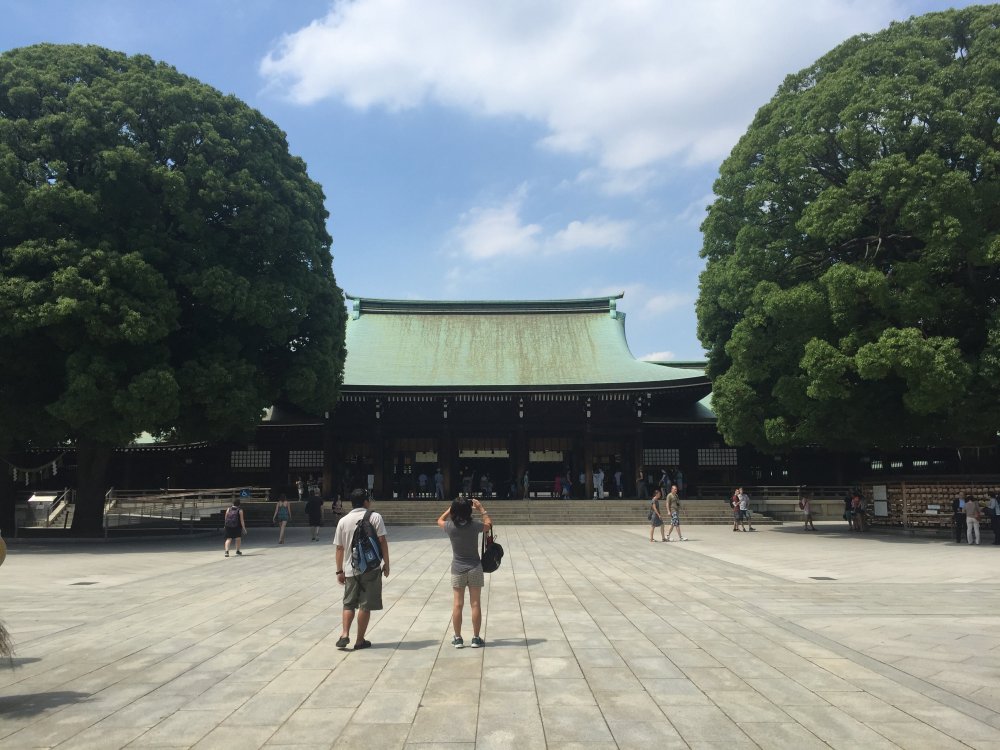
The Honden of the Meiji Shrine.
My dear wife contributed an article on Meiji Shrine.
![]()
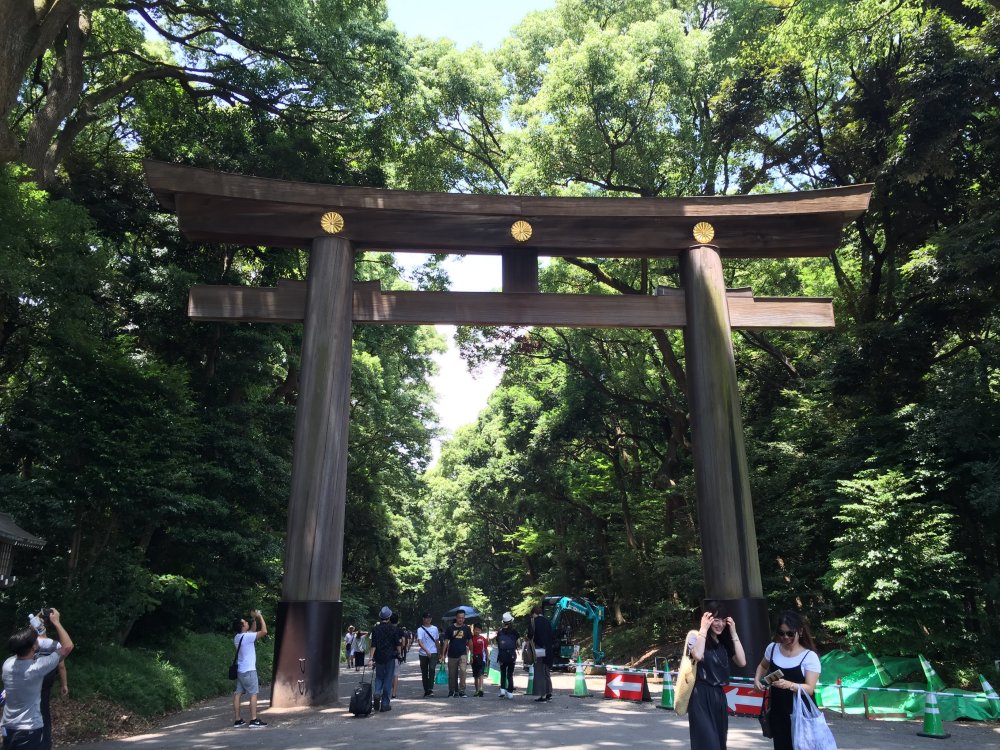
This Torii is the largest wooden torii (gate) in Japan.
I used to live nearby in my junior high school and high school years. I
would pay the New Yearfs homage to the shrine, and would jog through the
Gaien (outer park) of Meiji Shrine. I thought I knew the place well enough,
but as I prepared myself to take an Australian lady to the shrine on her
second visit to Japan, I came across some new facts about the shrine that
I never knew. One was how the shrine was constructed in this location,
and secondly the fact that the mixed forest surrounding the main shrine
building had been created under a grand plan based on bio-diversity.
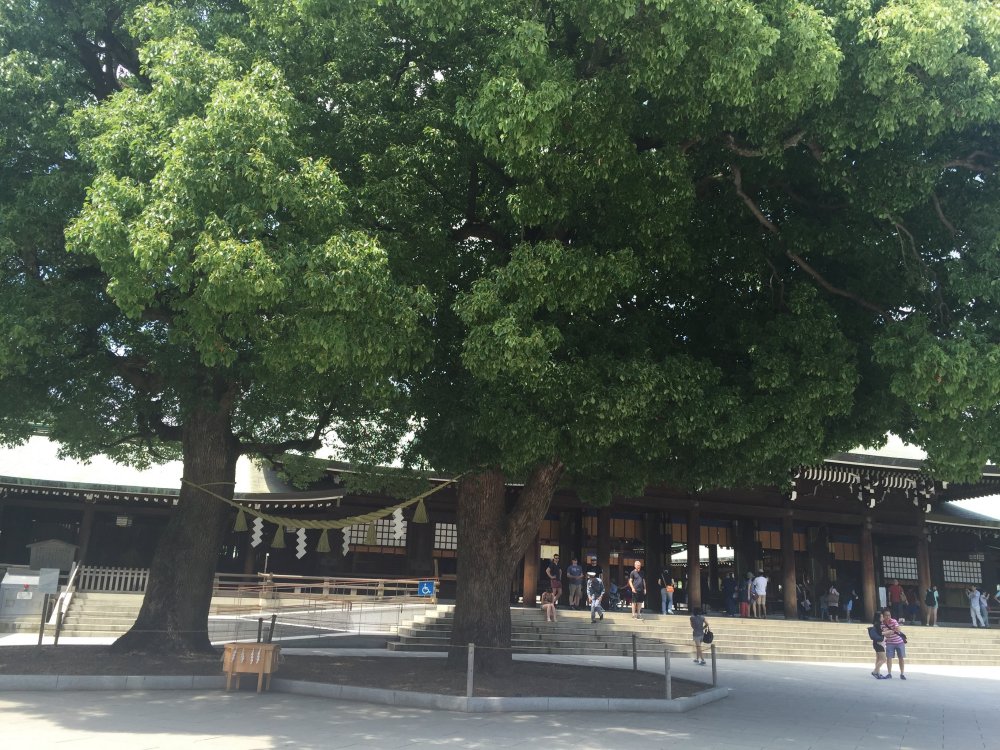
It is said that couples that pray through these two huge trees are rewarded with happiness. I was asked if a couple would be rewarded even if only one of them prayed. I did not have an answer to that question.
Meiji Shrine is dedicated to Emperor Meiji. Construction of the shrine commenced in 1915, three years after his demise. However powerful a leader he may have been for ending Japanfs isolation policy and advancing the modernization of Japan, never had any shrine been dedicated to an Emperor. It is unprecedented to dedicate a shrine to an Emperor.
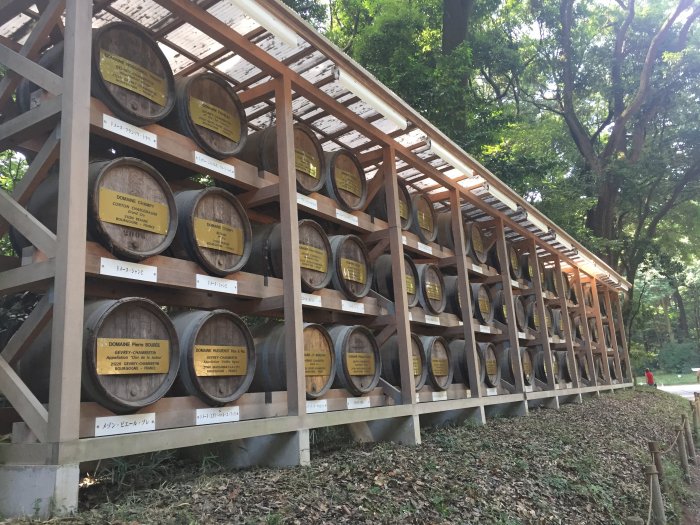
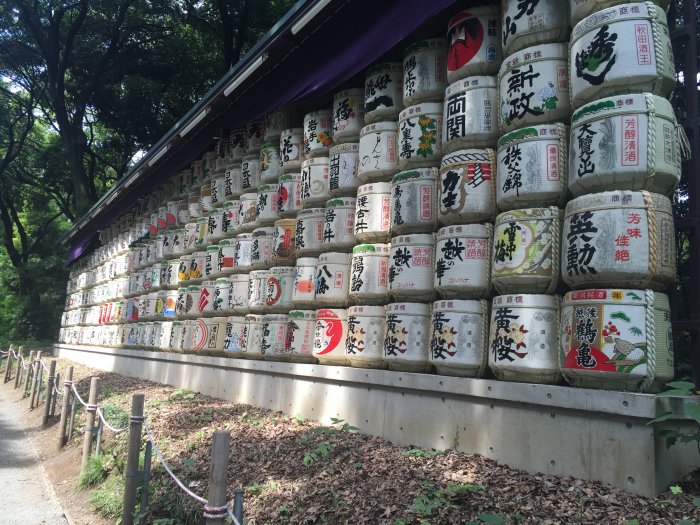
The sake barrels on the right are customary for a Shinto shrine. But the wine barrels on the left is a tribute to Emperor Meiji for his efforts to Westernize Japan.
Emperors do have graves. The grave of Emperor Meiji is in Fushimi in Kyoto. But Emperorfs graves are not open to the public, so people cannot visit them to pay their respects. Meiji Shrine was constructed in that location with strong support from the business world, that wished to develop Tokyo further to the west.
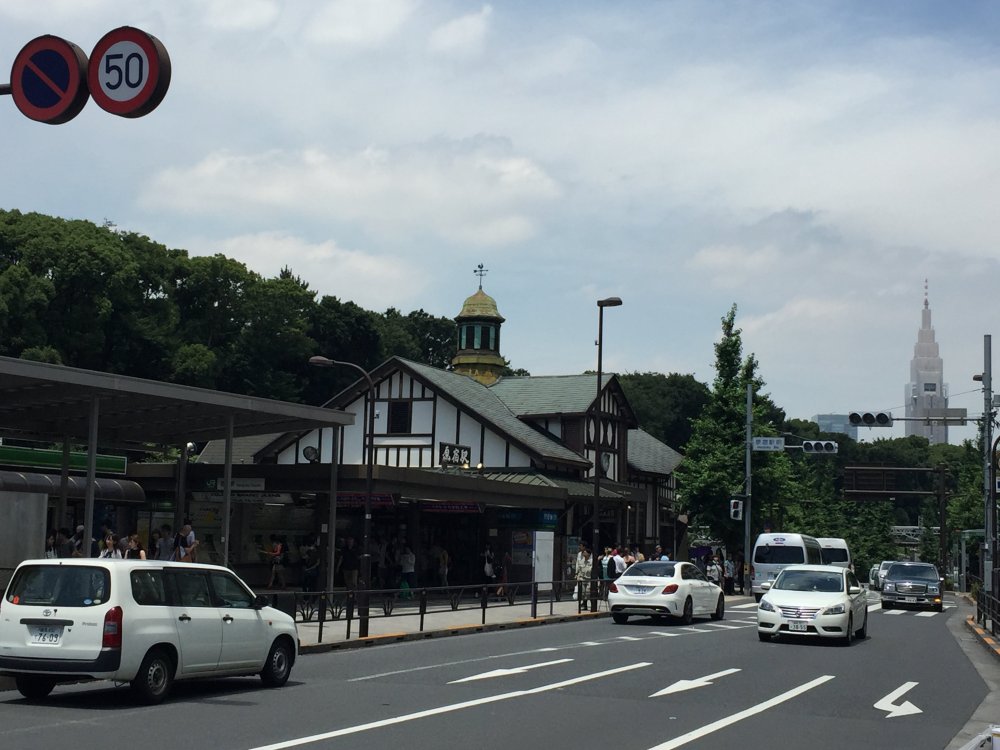
Harajuku Station is at the entrance to the Meiji Shrine. We are all fond of the station for its western architecture. Sadly it is to be dismantled by the time of the 2020 Tokyo Olympics as it is considered too small to cope with all the visitors.
At the time, there was a genuine atmosphere of the population to construct something to commemorate the achievements of Emperor Meiji. Various ideas such as a museum, library, stadium etc was floating in the air, and it would have to be funded as well. Thatfs where the business world came in with city planning motives. In those days, the center of Tokyo was in the Nihonbashi district, and expansion room was limited. They wished to extend the area to Shinjuku and Shibuya in the west. There were then only fields and an army training ground in the sparsely populated area, which is unbelievable from how Shinjuku and Shibuya are now. Fund raising should go well as it was to commemorate the reign of Emperor Meiji. This is how Meiji Shrine and its Gaien was realized. People came to live in the areas, the businessmenfs dreams were fulfilled and Tokyofs extension to Shinjuku and Shibuya was achieved.
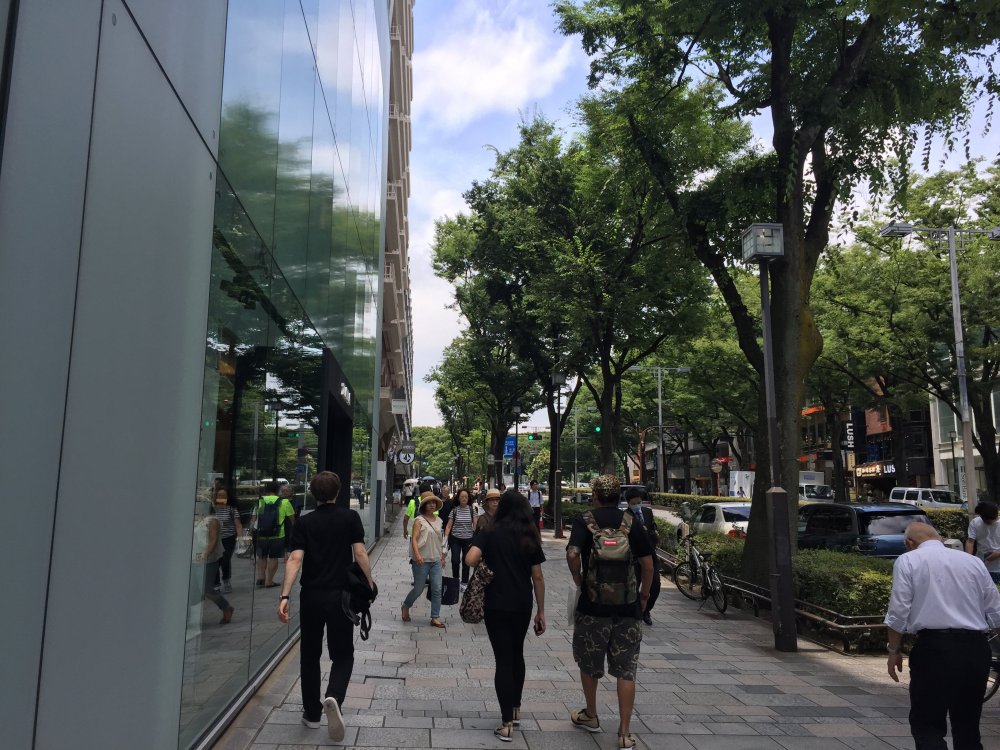
Omotesandou (main prayer route) leading to Meiji Shrine. It has many western trendier shops and boutiques, a marked contrast with Nakamisedoori in Asakusa.
Ifd like now to touch upon my second recognition. Shintou believes in many Gods. The Gods dwell everywhere. Whichever Gods they may be dedicated to, Shinto shrines are accompanied by a forest (Chinju no mori) to quell the anger of the Gods. The forest should be as natural as possible. 100 years ago, when bio-diversity was not yet a well known terminology, the landscapers and scholars set themselves the task of creating a natural forest artificially. The trees assembled from all parts of Japan were categorized into three groups based on how high they would grow. They were planted in such way that in 150 years the forest would consist of only evergreen broad-leaved trees. The forest space and the shrine space were segregated by mounds. Thus, fallen leaves would pile on the ground, turn to leaf molds, disintegrate and act as a fertilizer. They planned to create a permanent natural forest without any fertilizer or pesticides that would grow on their own without any human intervention. The landscapers and scholars planned so that in 150 years the evergreen broad-leaved trees would grow to create a natural mixed forest that would survive forever.
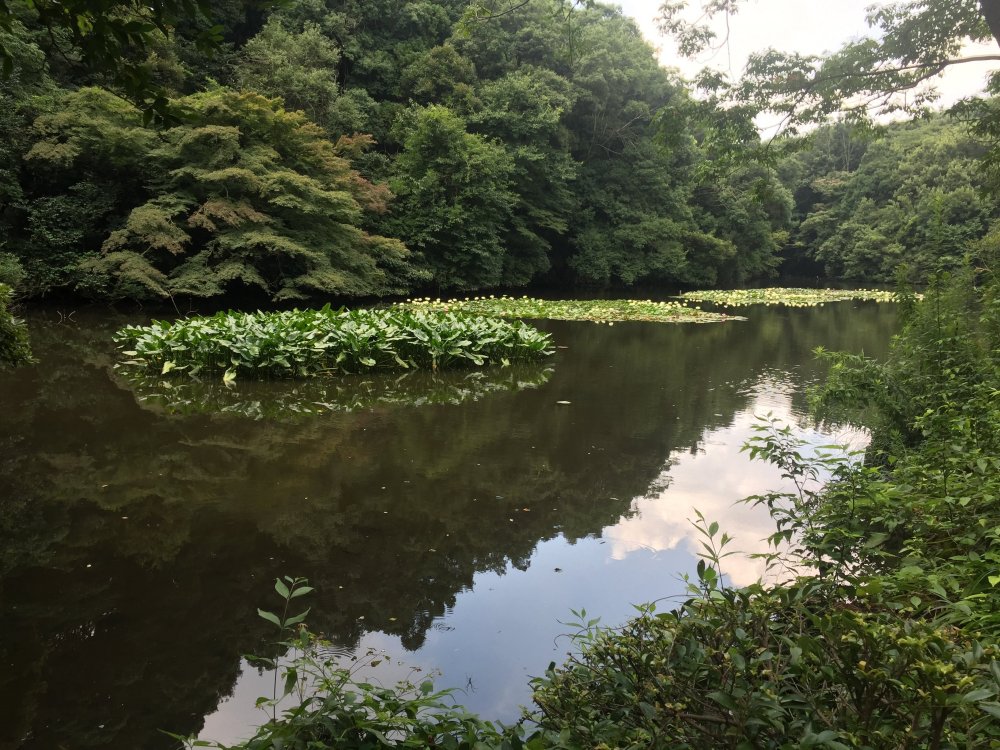
Breathtaking view of the deep forest from the Shoubuen Gardens inside the Meiji Shrine.